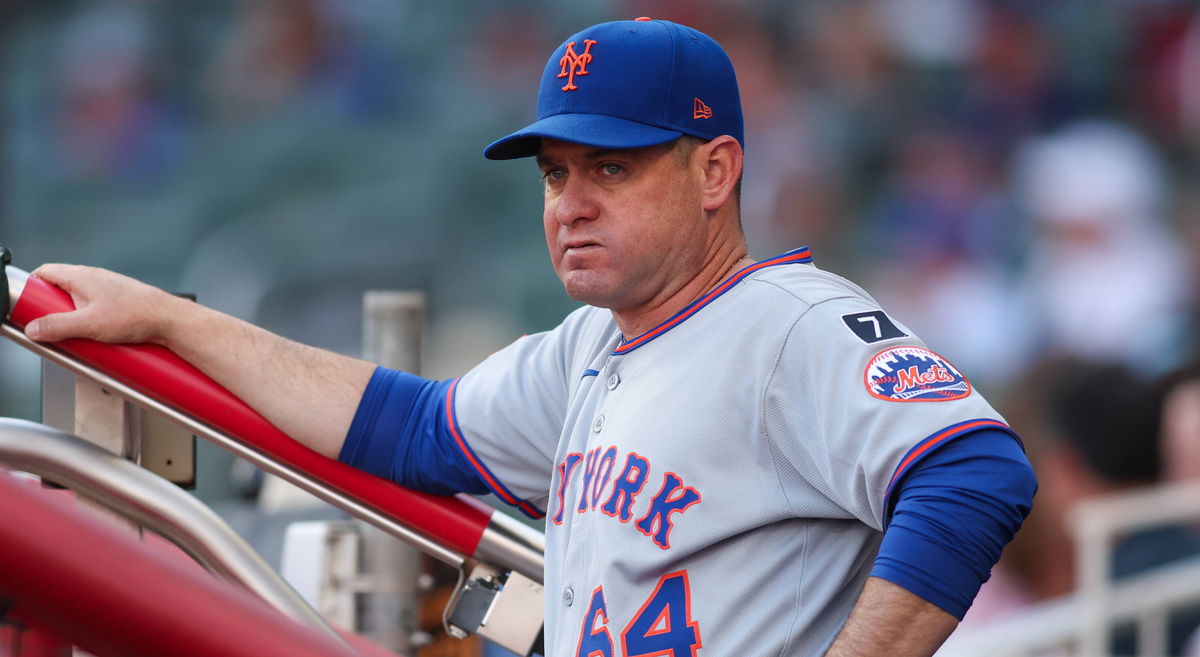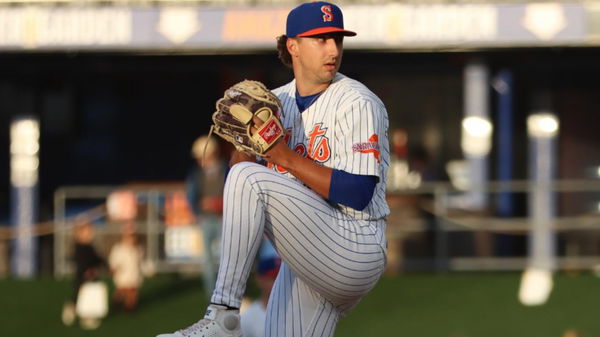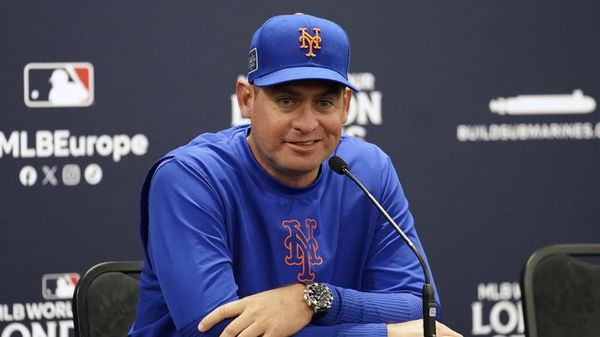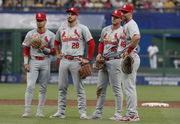
Imago
MLB, Baseball Herren, USA New York Mets at Atlanta Braves Jun 19, 2025 Atlanta, Georgia, USA New York Mets manager Carlos Mendoza 64 in the dugout before a game against the Atlanta Braves at Truist Park. Atlanta Truist Park Georgia USA, EDITORIAL USE ONLY PUBLICATIONxINxGERxSUIxAUTxONLY Copyright: xBrettxDavisx 20250619_bdd_ad1_003

Imago
MLB, Baseball Herren, USA New York Mets at Atlanta Braves Jun 19, 2025 Atlanta, Georgia, USA New York Mets manager Carlos Mendoza 64 in the dugout before a game against the Atlanta Braves at Truist Park. Atlanta Truist Park Georgia USA, EDITORIAL USE ONLY PUBLICATIONxINxGERxSUIxAUTxONLY Copyright: xBrettxDavisx 20250619_bdd_ad1_003
With their season hanging by a thread, the New York Mets walked into Miami for a final, fateful series. But what unfolded on Friday night was not a confident step toward October but a painful repetition that the teams have been doing for the last two months. A controversial pitching change in the fifth inning turned a promising 2-0 start into a 6-2 loss. The move left WFAN’s Rico Brogna, and countless fans, asking manager Carlos Mendoza: “Why? Why?” That single decision sent the Mets’ playoff odds plummeting from 78.1% to 43.8% in one night.
Watch What’s Trending Now!
On June 12, the Mets had the best record in baseball at 45-24, and since that day, they have posted a 35-52 record. That collapse, combined with a Cincinnati Reds’ win on Friday, almost knocked the Mets out of a playoff spot with just two games left. And for their most recent Marlin’s game, the pivotal moment arrived in the fifth inning. Rookie starter Brandon Sproat held the Marlins scoreless through four frames with a 2-0 lead. But things unraveled with stunning speed in the fifth.
The Marlins hit a pair of singles, followed by a game-tying triple from Heriberto Hernández. A defensive misplay by first baseman Pete Alonso then allowed the go-ahead run to score. With two outs, another single put runners on the corners, and Mendoza pulled his rookie pitcher after only 61 pitches. This is the moment that drew the sharpest criticism from Rico Brogna. He argued, “I am in no rush if I’m Carlos Mendoza to go to this bullpen… I was willing to keep Brandon Sproat in the game… It’s the fifth inning. His pitch count is low… I would have given him a couple of more batters.”
ADVERTISEMENT

Imago
Source: Brandon Sproat’s Instagram
Mendoza defended the decision and said postgame that he saw “a lot of hard-hit contact” and didn’t want to risk further damage. But that rationale didn’t sit well with Brogna, as Mendoza was not going to his best relievers. Mendoza put Gregory Soto, who had an 8 ERA, allowing 15 hits in his 10 appearances, leading to the Sep 26 game. Soto entered the game 3-2 and gave up an RBI single to Xavier Edwards. The very next batter, pinch-hitter Connor Norby, launched a two-run home run. Just like that, the game was blown wide open at 6-2.
So, Brogna continued, ” It’s not like you’re going to Edwin Diaz or Tyler Rogers or Brooks Raley. You’re staying away from those guys—maybe the entire game, but certainly until the very end. So you’re in a rush to go to Gregory Soto. That’s who you’re in a rush to go to. Or you’re in a rush to go to Kevin Herget, who’s one of the many guys who’s taken that Syracuse train up and down. Those aren’t exactly guys you want to be in a rush to go to.”
ADVERTISEMENT
But it wasn’t just about one pitcher or one decision; it exposed the whole fragile structure the Mets had been balancing on for months. It was wrong that Mendoza’s bullpen was thin. The real question was:
ADVERTISEMENT
Why was he forced into that spot at all?
Here’s the truth—Mendoza didn’t have his A-list arms. Closer Edwin Díaz was unavailable after a massive six-out save two days prior. Setups men Tyler Rogers and Brooks Raley are strictly reserved for high-leverage situations late in games. Both had pitched the previous day against the Cubs and were being saved for their specific late-game roles. But this loss was not just one man’s fault, and the blame must be shared by the entire team.

Imago
Credits: MLB.COM
It’s easy to point at Mendoza, but let’s be clear—the Mets didn’t lose just because of one reason. The Mets’ offense couldn’t touch Sandy Alcantara after the first inning. The lineup finished the game a pathetic 1-for-10 with runners in scoring position. Their best chance came in the eighth, when Alonso struck out with two runners on, and pinch-hitter Mark Vientos popped out with the bases loaded.
ADVERTISEMENT
The defense also played a key role in the fifth-inning collapse when the Marlins’ rally was extended by Pete Alonso’s inability to field a grounder cleanly, which allowed the go-ahead run to score. So, Mendoza admitted later, “We put ourselves in this position… We did it to ourselves.”
Top Stories
Toronto Loyalist Raises Alarm as Shocking Bo Bichette Update Puts Blue Jays’ 2026 Dreams on the Brink

Red Sox’s Alex Bregman Fallout Becomes Evident as Two MLB Rivals Ignite Fierce Bidding War, per Report

$275M Cardinals Star’s MLB Future All but Sealed as U.S. Sportscaster Asks $2.75B Team to Make Bold Move

Mets Become Leading Contender For 30YO Ex-Phillies Star after David Stearns’ Mega Offseason Misses, Per Insider

Kyle Tucker Throws Blue Jays Into Chaos as Ross Atkins Forced Into Harsh Job Cuts

In the end, Mendoza’s decision was the spark, but the team’s flaws provided the fuel. The loss was a perfect summary of their issues: a thin rotation, a weak middle bullpen, weak defense, and a failure to execute in clutch moments. So, with all of the above, now, the Mets are left with a simple hope from their manager: “We have got to win the next two and see what happens.”
ADVERTISEMENT
ADVERTISEMENT
ADVERTISEMENT

